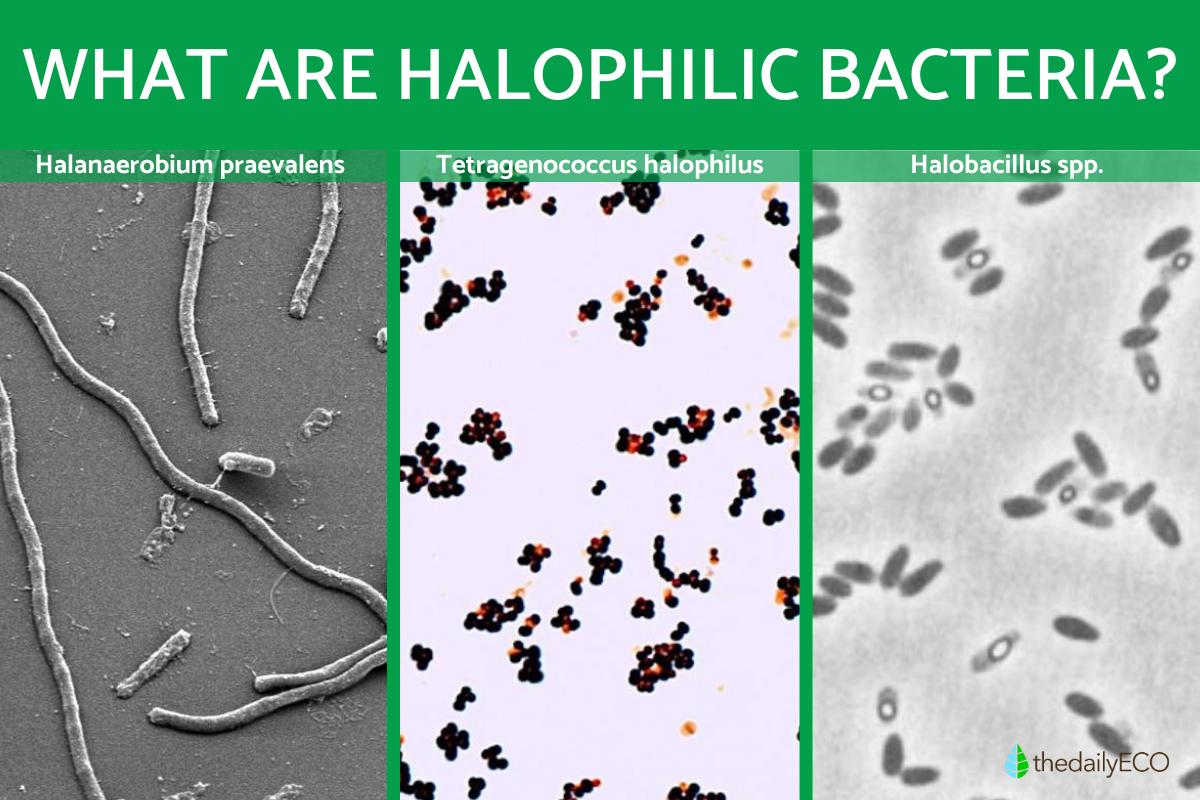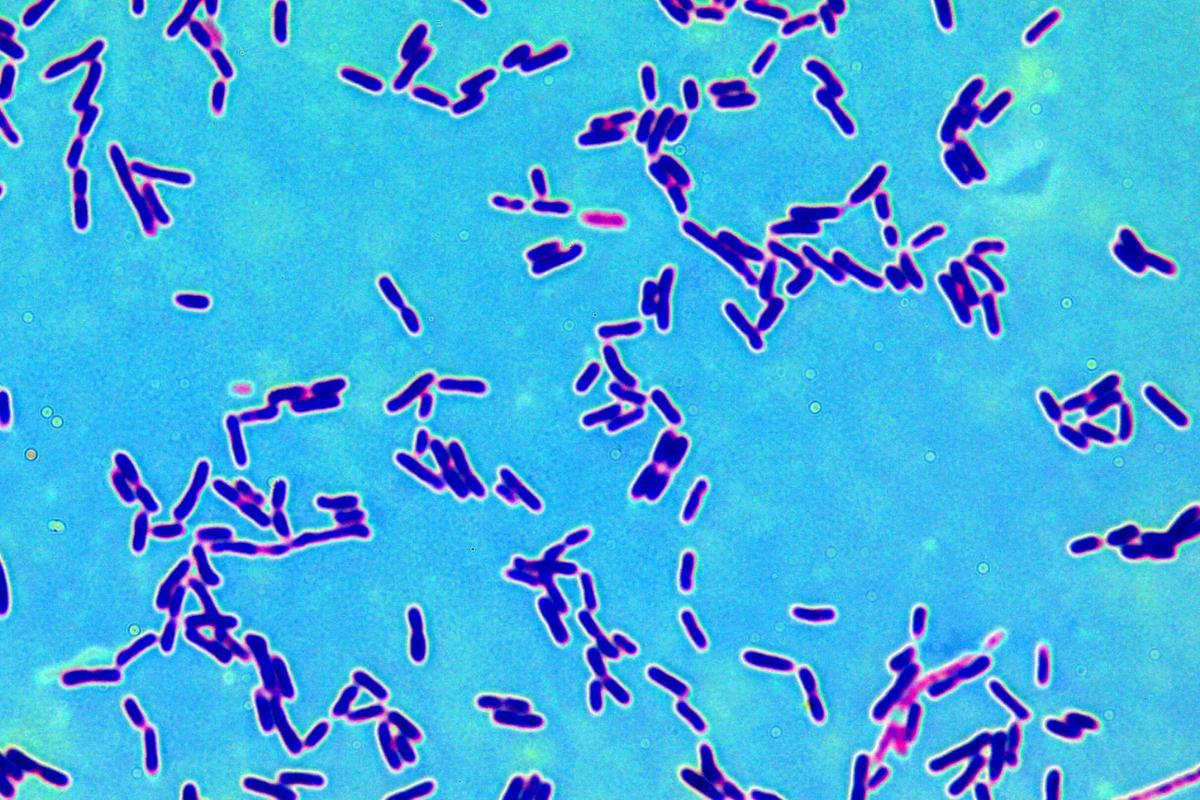What Are Halophilic Bacteria?


Life as we know it thrives within specific parameters, but Earth is also home to extraordinary organisms that defy these limitations. Among them are halophilic bacteria, microbes that not only survive but flourish in environments saturated with salt. From the depths of salt mines to the sun-baked surfaces of salt flats, these organisms have evolved unique adaptations to thrive where most life forms would perish.
In the following article by thedailyECO, we explain what halophilic bacteria are, their characteristics, habitats, the role they play in our world and their potential applications.
What are halophilic bacteria?
Halophilic bacteria are fascinating microorganisms that have adapted to thrive in environments with extremely high salt concentrations. The word "halophile" itself is derived from Greek, meaning "salt-loving."
These bacteria have evolved unique mechanisms to survive and even flourish in conditions that would be lethal to most other organisms. They possess specialized proteins and cellular structures that allow them to maintain their internal environment despite the external salinity.
Salinity in these environments can be due to sodium chloride or various other mineral salt ions. The proportion of these ions can vary depending on the location, with possible dominance of:
- Sodium
- Chlorides
- Sulfates
- Magnesium
- Ammonium
- Potassium
- Carbonates
- Calcium
- Phosphates
- Bicarbonates
Halophilic bacteria can be classified based on their tolerance to salinity:
- Weak Halophiles: tolerate around 3% salinity, similar to most marine organisms.
- Moderate Halophiles: tolerate 3% to 15% salinity.
- Extreme Halophiles: tolerate up to 25% salinity.
Key characteristics of halophilic bacteria
- They are single-celled bacteria.
- Often exhibit red or purple pigments to absorb sunlight.
- Many can perform photosynthesis.
- They have advanced osmoregulation mechanisms in their membranes and cytoplasm to maintain balance despite changes in salinity.
Curious about other microorganisms that thrive in extreme environments? Learn more about cyanobacteria in our next article.

Where do halophilic bacteria live?
Halophilic bacteria thrive in high-salinity environments, typically found in dry and hot regions, but they also inhabit certain industries and food products. These high-salinity ecosystems are widespread globally, making halophilic bacteria cosmopolitan species, with distribution dependent on specific environmental conditions and species characteristics.
- Salt lakes: these inland bodies of water, such as the Great Salt Lake in Utah, the Dead Sea in the Middle East, and the Caspian Sea, are prime examples of environments teeming with halophilic bacteria.
- Evaporation ponds: these artificial structures, often used in salt production, create hypersaline conditions ideal for halophile growth.
- Salt mines: deep underground, salt mines can harbor unique communities of halophilic bacteria.
- Salted foods: while not their primary habitat, halophilic bacteria can sometimes contaminate foods with high salt content, such as salted fish or cured meats.
- Marine environments: while they prefer even higher salt concentrations, some halophiles can also be found in marine environments with increased salinity.
Halophilic bacteria's presence in diverse environments, including foods, highlights their remarkable adaptability to high-salinity conditions.

Examples of halophilic bacteria
Halophilic bacteria are divided into multiple species, each with unique characteristics and abilities. There are 213 identified species within the family Halobacteriaceae alone. Here are some of the most interesting examples:
- Halanaerobium praevalens: isolated from the Great Salt Lake in the United States, this bacterium is known for its bioremediation capabilities. It can sequester carbon and eliminate toxic aromatic compounds in environments with up to 13% salinity, making it effective where other procedures might fail.
- Tetragenococcus halophilus: essential for soy sauce production, this bacterium is involved in the fermentation process. Soybeans and wheat grains are left in water with 19% sodium chloride for 9 months in the dark, during which these bacteria transform the grains into soy sauce, contributing to its unique umami flavor and aroma.
- Halobacillus spp.: found in the gypsum dunes of Cuatro Ciénegas in Mexico, this bacterium is notable for its proteases, enzymes that can break down proteins. These proteases have shown potential in inhibiting enzymes involved in diabetes. Multiple halophilic bacteria thrive in these pools, highlighting the diverse microbial life in extreme environments.
To understand the fundamental differences between these microscopic organisms, explore our article detailing the key distinctions between viruses and bacteria.

Applications of halophilic bacteria in biotechnology
Halophilic bacteria, which thrive in extremely salty environments, offer several valuable applications in biotechnology due to their unique characteristics:
- They are easy to grow, making them practical for various biotechnological processes.
- They do not need many nutrients to grow, reducing the cost and complexity of their cultivation.
- Their cultivation typically results in minimal contamination, ensuring high purity in their applications.
- These bacteria produce enzymes used in creating flavorings and colorants for various industrial applications.
- Certain polymers produced by halophilic bacteria aid in the extraction of crude oil, making the process more efficient.
- Polymers are also used in cleaning up polluted environments. They help remove toxic waste from hypersaline wastewater, such as those found in pesticide and herbicide manufacturing, pharmaceutical factories, oil extraction sites, leather processing facilities, and olive oil production.
- Halophilic bacteria can be employed to neutralize herbicides and heavy metals like mercury, cadmium, and copper from contaminated environments.
- They serve as stabilizers for enzymes, nucleic acids, and cells, proving useful in various biomedical research fields.
Their ability to thrive in extreme conditions makes them invaluable for industrial processes, ecological restoration, and research applications.
If you want to read similar articles to What Are Halophilic Bacteria?, we recommend you visit our Biology category.
Zhang, L. & Xu, Y. (2020). Effects of Tetragenococcus halophilus and Candida versatilis on the production of aroma ‐ active and umami ‐ taste compounds during soy sauce fermentation. Journal of the Science of Food and Agriculture, 100(6), 2782-2790.
- Ramírez, N., Sandoval, AH, & Serrano, JA (2004) . Halophilic bacteria and their biotechnological applications. Journal of the Venezuelan Society of Microbiology, 24(1-2), 12-23.
- Center for Research and Assistance in Technology and Design of the State of Jalisco. (2015). Halophilic bacteria isolated from Cuatro Ciénegas. Available at: https://centrosconacyt.mx/objeto/bacterias-halofilas-aisladas-de-cuatro-cienegas/








